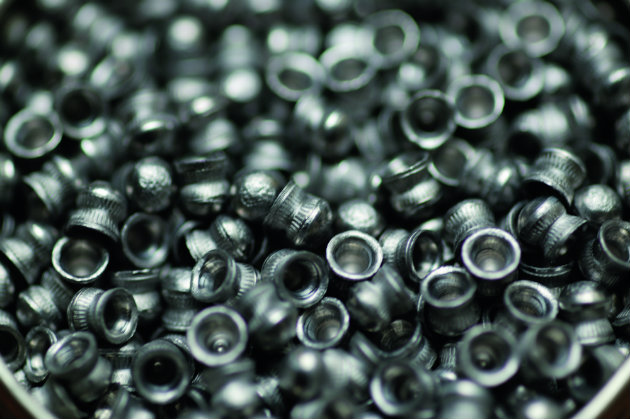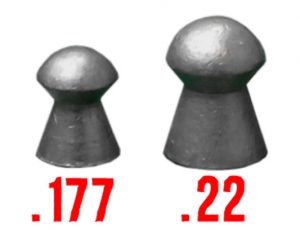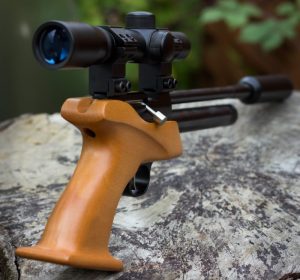This month we are setting our crosshairs on the AGT Vixen. Unique, compact, and balanced the Vixen is produced by Czech Manufacturers, AGT, and are imported into the UK by Regael. Released in early 2021 the Vixen soon became one of AGT’s best-selling rifles overtaking the Vulcan & Uragan.
The AGT range has proven very popular here at Pellpax, hence why we thought we would focus on one of their rifles. Airgun Technology was founded in 2013 and is based in the city of Praha (Prague), the capital city of the Czech Republic.
Light, Accurate & Reliable
The AGT Vixen is one of the newest rifles in AGTs’ range. They are available in two variations, the Vixen or the Vixen Long. The Vixen has a barrel length of 250mm, an overall length of 770mm, and a weight of 2.2kg, whilst the Vixen long has a barrel length of 400mm, an overall length of 920mm, and a weight of 2.4kg. These specifications make the AGT Vixen one of the lightest rifles on the market today.

To ensure the high-quality finish is not compromised, the AGT Vixen comes standard with a 250CC carbon fibre bottle which, is fitted with a neoprene sleeve to act as a stock. The butt pad has a height adjustment feature to ensure the rifle fits comfortably in any shooters’ shoulder.
Packed with features
One thing that is worth mentioning is the ability to change the side of which the cocking arm is on. It is as simple as removing two screws, changing the side, and replacing the screws. Taking around 3-5 minutes in total this is a smart move from AGT as it caters for the left-handed market too. The trigger is incredibly smooth and can have the pull weight adjusted. I personally prefer a light pull however, it’s nice to have the option. I must also praise the positioning of the safety switch. Being located just north of the trigger this can easily be engaged and disengaged whilst you are shouldered and looking down the scope. Again, just a small design feature that goes a long way for me. The switch has a red indicator to make it obvious that the safety is either on, or off.
Filling the AGT Vixen

The compact, custom-made pressure gauge is well located. One of my pet hates includes pressure gauges that are located under the end of the barrel, as I feel uncomfortable having a barrel pointed at my face whilst filling the rifle. The block that the pressure gauge is located on houses the regulator, and you can also find both the air discharge port and the filling port here.
AGT Vixen – additional accessories

The magazine holder is sold separately
I really like the AR-Grip on the vixen which, is produced by IMI Defence. The magazines are easy to load and are 15 shots in .177 or 12 shots in .22. An additional accessory, that many owners choose to buy, is the magazine holder. This polymer housing will hold two magazines and attaches to the rifle via a small weaver rail located in front of the trigger guard.
The features go on…
The Vixen is equipped with a weaver rail measuring 195mm. Traditionally, air rifles use a 9-11mm rail, and Weaver / Picatinny rails are more frequently seen on Rimfire / Centrefire rifles however these are becoming increasingly popular amongst the airgun community.
A few, final thoughts

Finally, I would like to mention the shrouded barrel. This again is a feature that is becoming more frequent on airguns these days. The sound moderator is built within this and measures around 90mm. Although there is no option for an additional moderator, I don’t feel the vixen needs one. When I took it out shooting, I was very pleased with the level of noise and wouldn’t feel a moderator would provide much more of an advantage.
The real test
After doing all my research on this gun, I decided to take it out to see what all the fuss was about. I wanted to know whether the Vixen really was worth the £1499.99 price tag and what made this rifle, one of AGT’s most popular. My set-up was kept simple, I used a 3 ltr hydrotec bottle to fill the Vixen, mounted a Hawke Fast mount 6-24×50 AO IR using Hawke Weaver mounts, and set out to see if the Vixen, really lived up to what I had read.
Testing with target shooting pellets
Firstly, I thought I would try a target pellet for those looking to do some casual plinking either at home or down their local gun club. I used the H&N field target trophy .177. I love H&N as a brand simply because I find their quality is always top-notch and they perform in any rifle I put them through. Weighing 8.64 gr I set my targets up around the 25-yard mark.
The Result
Although I’m not Chris Kyle, I managed to get a 25mm grouping, which for comparison is about the size of a 2p coin. Considering I’m a clay shooter and don’t tend to do much airgun shooting, I was very pleased with this result. I’m confident that a dedicated shooter could get this grouping down to a 20mm grouping, which is around a 1p coin. For those of you, who prefer a larger calibre the H&N field target trophy is also available in .22.
Testing with hunting pellets
Next, I thought I would try a hunting pellet for those of you who carry out pest control. For this, I went for my go-to hunting pellet, the H&N Baracuda Hunter .177. Now as I previously mentioned I’m a clay shooter and only shoot airguns a handful of times outside of work however, even with my lack of practice I still manage to hit rabbits at good distances with these. Weighing slightly heavier than the H&N field target trophy, the Baracuda hunters are advertised at 10.49gr. I like these pellets as the hollow point ensures enough stopping power to counter the higher velocities of the .177 without affecting the flight of the pellet too much.
The Result
Once again, I set my target out at the 25-yard mark, and the results were the same. This time I got a 28mm grouping however, this could be down to the hollow point creating drag or could be down to the absents of my skills with an airgun. Like I mentioned previous I’m confident when I say a more experience airgun shooter could lower this group, but even at 28mm, it’s accurate enough to headshot a rabbit and/or rat. Once again for those of you who prefer the larger calibre, these pellets are available in a .22 calibre here.
My conclusion of the AGT Vixen
Overall, the Vixen is packed with many attractive features that any airgun enthusiast would be looking for when purchasing a rifle. Ok, the price for one is £1499.99 but this is really an investment as the rifle will last you years to come, and the quality of the AGT Vixen easily warrants the price tag. As standard AGT provides 2 magazines, a filling station, spare O-rings, a user manual, some souvenirs, and a soft case. If you would like to check out the Vixen and the Vixens’ accessories, please click here.














